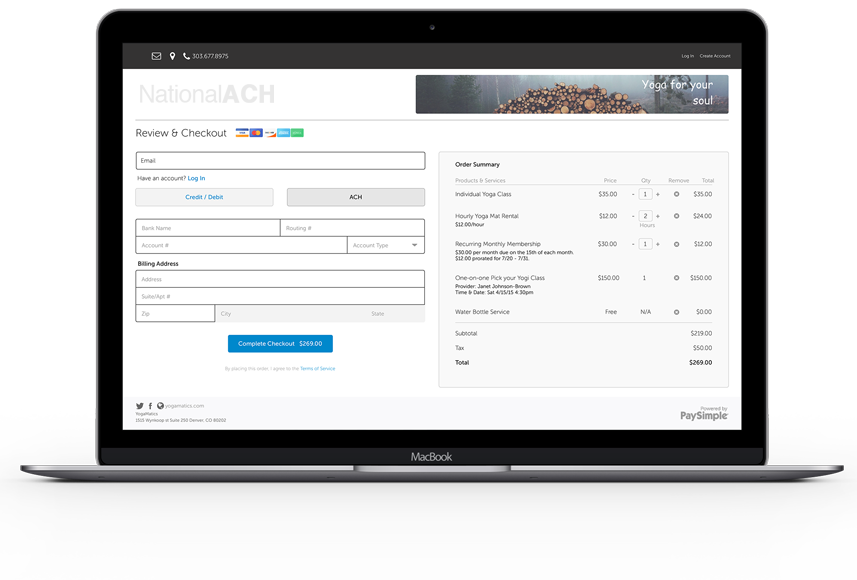ACH Standard Return Codes
Here’s a helpful list of ACH processing return codes, also called “R” codes.
Code | Description | |
R01 | Insufficient Funds | |
R02 | Account Closed | |
R03 | No Account/Unable to Locate Account | |
R04 | Invalid Account Number | |
R05 | Not Currently Used | |
R06 | Returned per ODFI’s Request | |
R07 | Authorization Revoked by Customer | |
R08 | Payment Stopped or Stop Payment | |
R09 | Uncollected Funds | |
R10 | Customer Advises Not Authorized | |
R11 | Check Truncation Entry Return | |
R12 | Branch Sold to Another DFI | |
R13 | RDFI Not Qualified to Participate | |
R14 | Representative Payee Deceased | |
R15 | Beneficiary or Account Holder Deceased | |
R16 | Account Frozen | |
R17 | File Edit Criteria | |
R20 | Non-Transaction Account | |
R21 | Invalid Company Identification | |
R22 | Invalid Individual ID Number | |
R23 | Credit Entry Refused by Receiver | |
R24 | Duplicate Entry | |
R26 | Mandatory Field Error | |
R27 | Trace Number Error | |
R28 | Routing Number Check Digit Error | |
R29 | Corporate Customer Advises Not Authorized | |
R30 | RDFI Not Participating in Check Truncation Program | |
R31 | Permissible Return Entry | |
R32 | RDFI Non-Settlement | |
R34 | Limited Participation DFI | |
R35 | Improper Debit Entry | |
R36 | Improper Credit Entry | |
R37 | Source Document Presented for Payment | |
R38 | Stop Payment on Source Document | |
R39 | Not Currently Used | |
R48-R49 | Not Currently Used | |
R50 | State Law Affecting RCK Acceptance | |
R51 | Item is Ineligible | |
R52 | Stop Payment on Item | |
R53 | Item & ACH Entry Presented for Payment | |
R54-R60 | Not Currently Used | |
R61-R74 | Used for Bank to Bank Communication |
ACH Standard Return Codes
Code | Description | |
R01 | Insufficient Funds | |
R02 | Account Closed | |
R03 | No Account/Unable to Locate Account | |
R04 | Invalid Account Number | |
R05 | Not Currently Used | |
R06 | Returned per ODFI’s Request | |
R07 | Authorization Revoked by Customer | |
R08 | Payment Stopped or Stop Payment | |
R09 | Uncollected Funds | |
R10 | Customer Advises Not Authorized | |
R11 | Check Truncation Entry Return | |
R12 | Branch Sold to Another DFI | |
R13 | RDFI Not Qualified to Participate | |
R14 | Representative Payee Deceased | |
R15 | Beneficiary or Account Holder Deceased | |
R16 | Account Frozen | |
R17 | File Edit Criteria | |
R20 | Non-Transaction Account | |
R21 | Invalid Company Identification | |
R22 | Invalid Individual ID Number | |
R23 | Credit Entry Refused by Receiver | |
R24 | Duplicate Entry | |
R26 | Mandatory Field Error | |
R27 | Trace Number Error | |
R28 | Routing Number Check Digit Error | |
R29 | Corporate Customer Advises Not Authorized | |
R30 | RDFI Not Participating in Check Truncation Program | |
R31 | Permissible Return Entry | |
R32 | RDFI Non-Settlement | |
R34 | Limited Participation DFI | |
R35 | Improper Debit Entry | |
R36 | Improper Credit Entry | |
R37 | Source Document Presented for Payment | |
R38 | Stop Payment on Source Document | |
R39 | Not Currently Used | |
R48-R49 | Not Currently Used | |
R50 | State Law Affecting RCK Acceptance | |
R51 | Item is Ineligible | |
R52 | Stop Payment on Item | |
R53 | Item & ACH Entry Presented for Payment | |
R54-R60 | Not Currently Used | |
R61-R74 | Used for Bank to Bank Communication |
